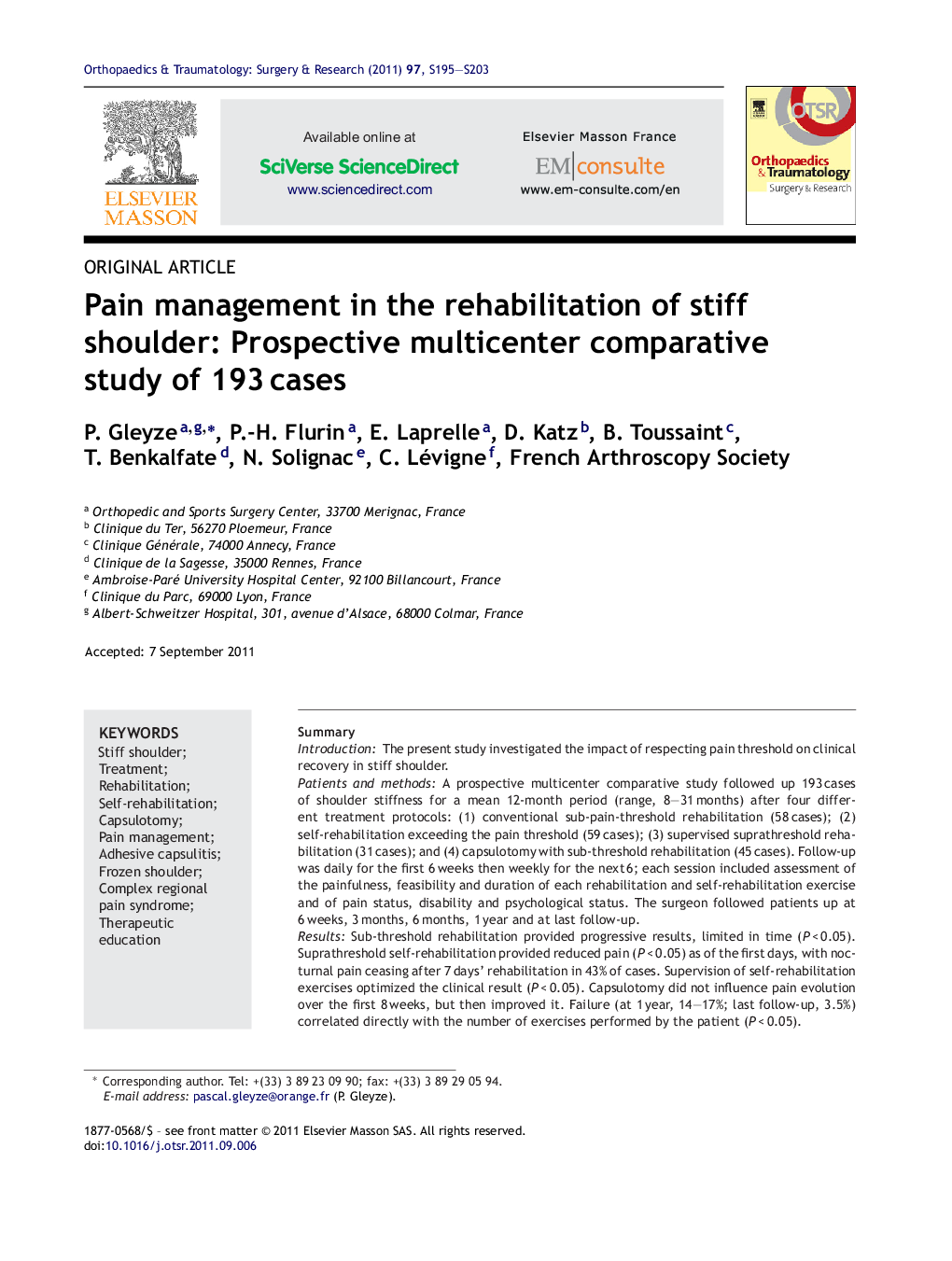| Article ID | Journal | Published Year | Pages | File Type |
|---|---|---|---|---|
| 4082151 | Orthopaedics & Traumatology: Surgery & Research | 2011 | 9 Pages |
SummaryIntroductionThe present study investigated the impact of respecting pain threshold on clinical recovery in stiff shoulder.Patients and methodsA prospective multicenter comparative study followed up 193 cases of shoulder stiffness for a mean 12-month period (range, 8–31 months) after four different treatment protocols: (1) conventional sub-pain-threshold rehabilitation (58 cases); (2) self-rehabilitation exceeding the pain threshold (59 cases); (3) supervised suprathreshold rehabilitation (31 cases); and (4) capsulotomy with sub-threshold rehabilitation (45 cases). Follow-up was daily for the first 6 weeks then weekly for the next 6; each session included assessment of the painfulness, feasibility and duration of each rehabilitation and self-rehabilitation exercise and of pain status, disability and psychological status. The surgeon followed patients up at 6 weeks, 3 months, 6 months, 1 year and at last follow-up.ResultsSub-threshold rehabilitation provided progressive results, limited in time (P < 0.05). Suprathreshold self-rehabilitation provided reduced pain (P < 0.05) as of the first days, with nocturnal pain ceasing after 7 days’ rehabilitation in 43% of cases. Supervision of self-rehabilitation exercises optimized the clinical result (P < 0.05). Capsulotomy did not influence pain evolution over the first 8 weeks, but then improved it. Failure (at 1 year, 14–17%; last follow-up, 3.5%) correlated directly with the number of exercises performed by the patient (P < 0.05).DiscussionThe dogma of respecting the pain threshold is dated: pain inflicted on a passive patient impairs clinical evolution, but pain managed by an informed active patient under experienced supervision provides rapid recovery of function and pain-free status.Level of evidenceLevel III, case-control, prospective comparative.
